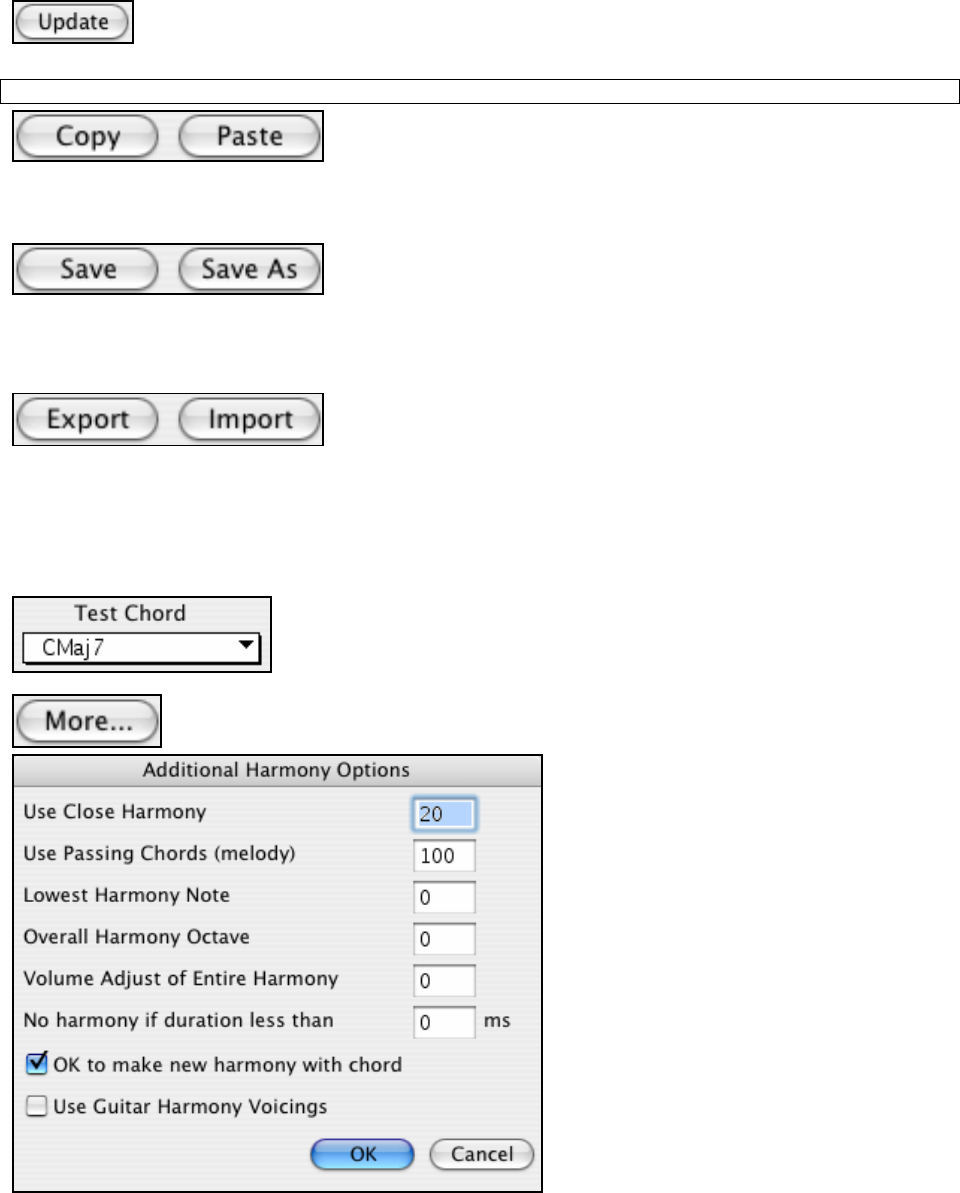User Guide
Table Of Contents
- PG Music Inc. License Agreement
- Table of Contents
- Chapter 1: Welcome to Band-in-a-Box!
- Chapter 2: QuickStart Tutorial
- Chapter 3: Band-in-a-Box 2010.5 for Macintosh
- Welcome to Band-in-a-Box 2010.5
- New Features in Band-in-a-Box 2010
- More New RealTracks
- QuickStart Tutorial
- Quick Song Settings
- Save Default Mix
- Improved Audio Rendering
- DAW Plug-in Mode
- Freeze Tracks
- RealTracks Enhancements
- New Favorite Songs/Styles Dialog
- Rendering Tracks
- StylePicker Enhancements
- New in the StyleMaker
- Chapter 4: The Main Screen
- Chapter 5: Guided Tour of Band-in-a-Box
- Chapter 6: Band-in-a-Box PowerGuide
- RealTracks
- RealDrums
- Song Settings
- The Chordsheet
- Chord Preview/Builder
- MIDI file “Chord Wizard”
- Applying Styles
- The StylePicker
- Playing, Pausing, and Stopping Songs
- Changing Volume, Panning, Reverb, Chorus, Bank
- Freeze Tracks
- Saving Songs
- Preferences – User Settings
-
- Show Chords with push/rest chars
- Metronome During Recording
- Harmony Volume Adjust
- OK to Load Style with songs
- Write Guitar part on 6 channels
- Turn External Keyboard’s Local On at end of session
- OK to beep with messages
- OK to prompt to reduce/expand
- For Roman Numerals in minor keys, use relative major
- Save Button on main screen works as Save As
- Name MIDI files with .MID extension
- Allow larger fonts on Chordsheet
- Color for Chordsheet Area
-
- Other Editing Features
- MIDI Setup
- The JukeBox
- Chapter 7: Notation and Printing
- Chapter 8: Automatic Music Features
- Chapter 9: Recording Tracks
- Chapter 10: Audio Features
- Chapter 11: Wizards, Tutors, and Fun
- Chapter 12: User Programmable Functions
- Chapter 13: CoreMIDI and Apple DLS Synth
- Chapter 14: Reference
- PG Music Inc.
- Index
- Registration Form

Chapter 12: User Programmable Functions
242
For the Shearing Quintet harmony, we will set the patches as follows:
Channel A: Piano
Channel B: Vibes
Channel C: Guitar
When we have made changes to the harmony, we will hear these changes on the harmony channel.
Important note: You need to press the UPDATE button after you've made any changes for the changes to take effect.
You make Copy a Harmony to the clipboard, and then move to a new
harmony and PASTE the harmony to the new location.
For example, if you want to make a harmony similar to the Shearing Quintet harmony, choose [Copy], move to a
new harmony, and choose [Paste]. Then rename that harmony “Shearing - modified” and you can make changes to
it (such as using different instruments).
You should never have to press these [Save] buttons since the harmony is
saved automatically for you. All of the 256 harmonies are saved in a
single .har file called default.har. If you have run out of harmonies, you can start a new harmonies file by pressing
the [SaveAs]. For example, if you want to make a disk of add-on harmonies, you can make one and save it as
MyName.HAR. Then you could share it with other Band-in-a-Box users who could load in your bank of harmonies
(from the Har| Edit a Harmonies File…) without disrupting their own existing default.har file.
As stated above, each .har file has 256 harmonies, so you probably need
only 1 file (default.har) for all your harmonies. But if you've made a great
harmony and want to give it to your friend for example, you can export a single harmony as a.h1 file. Your friend
can then import this harmony into their .har file. Or, you could upload some.h1 files that you've created to your
favorite web site for other Band-in-a-Box users to enjoy by importing them into their default.har harmonies file.
The best way to develop a harmony is to hear it as it’s playing. The preferred way to do this is to have a song
playing that has a melody in it. Any changes to the harmony will be heard on the melody as soon as you press the
[Update] button. You can also play along as the song is playing, and hear the new harmony on the Thru channel.
If you don't want to have a song playing, and want to hear the harmony, then set
the Test Chord to a certain chord. Then you can play on the MIDI keyboard
(with no song playing) and hear your harmony. This allows you to examine
exactly what notes Band-in-a-Box is using to make your harmony.
Additional harmony settings are accessed by pressing the [More] button, which brings up the
Additional Harmony Options dialog box:










